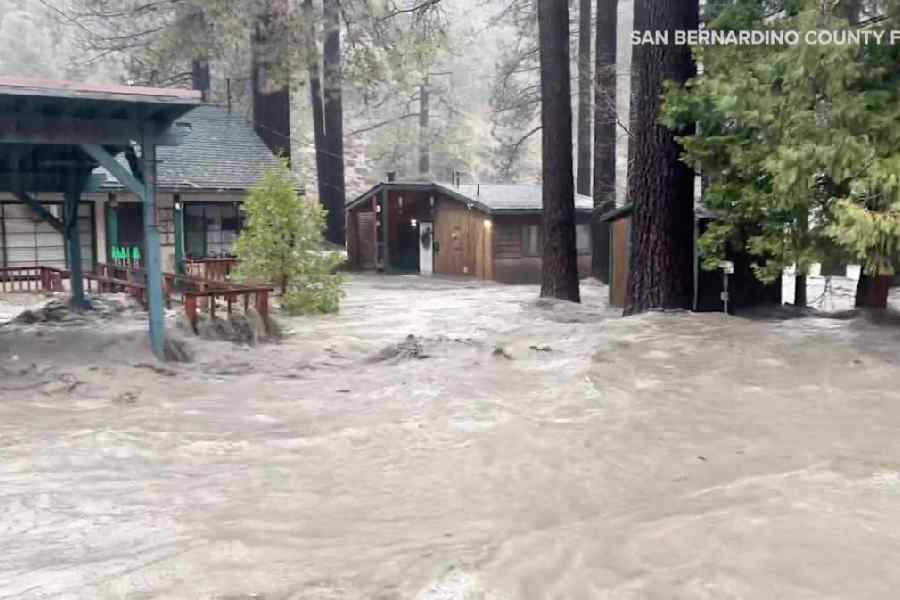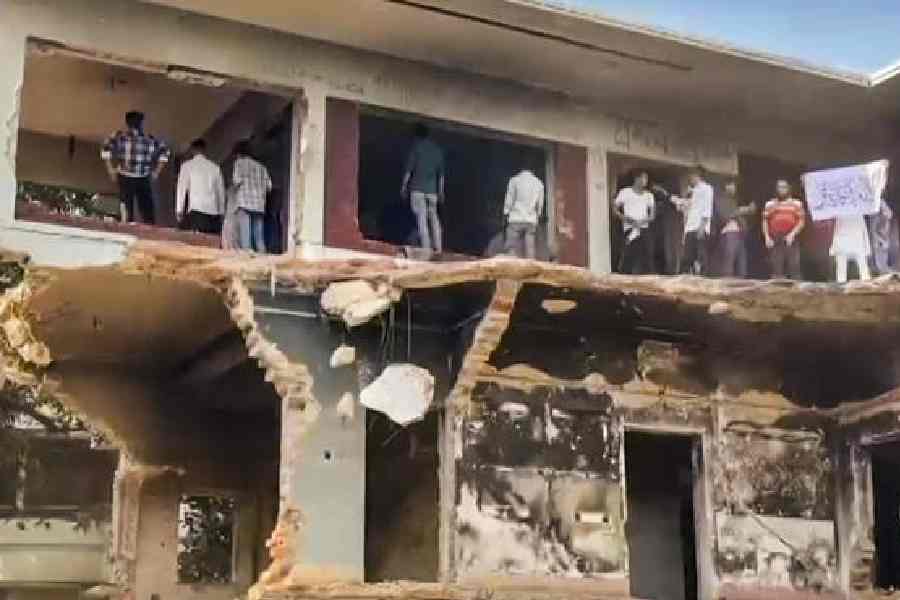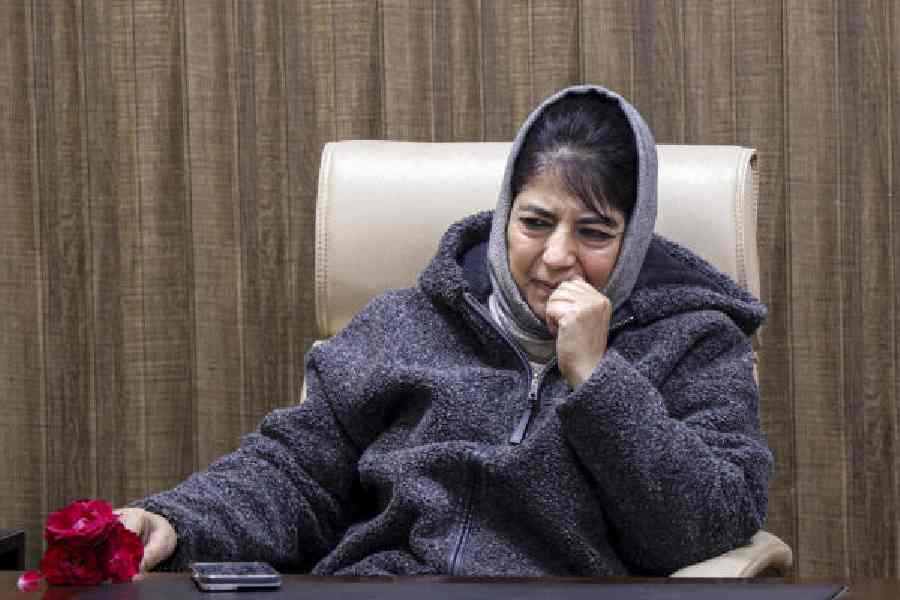 |
| An Iraqi guard with a torn carpet in the ransacked National Museum of Antiquities, Baghdad. (AFP) |
Washington, April 14: In the months leading up to the Iraq war, US scholars repeatedly urged the defence department to protect Iraq’s priceless archaeological heritage from looters, and warned specifically that the National Museum of Antiquities was the single most important site in the country.
Late in January, a mix of scholars, museum directors, art collectors and antiquities dealers asked for and were granted a meeting at the Pentagon to discuss their misgivings. McGuire Gibson, an Iraq specialist at the University of Chicago’s Oriental Institute, said yesterday that he went back twice more, and he and colleagues peppered defence department officials with e-mail reminders in the weeks before the war began.
“I thought I was given assurances that sites and museums would be protected,” Gibson said. Instead, even with US forces firmly in control of Baghdad last week, looters breached the museum, trashed its galleries, burned its records, invaded its vaults and smashed or carried off thousands of artifacts dating from the founding of ancient Sumer around 3,500 BC to the end of Islam’s Abbasid Caliphate in 1258 AD.
Asked yesterday about the looting of the museum, defence secretary Donald Rumsfeld blamed the chaos that ensues “when you go from a dictatorship” to a new order. “We didn’t allow it. It happened,” Rumsfeld said yesterday on NBC’s Meet the Press. “There’s a transition period, and no one is in control. There is still fighting in Baghdad. We don’t allow bad things to happen. Bad things happen in life, and people do loot.”
Iraq also has 13 regional museums at risk, including another world-renowned facility in the northern city of Mosul, as well as thousands of archaeological sites, ranging from the fabled ancient cities of Ur, Nineveh, Nimrud and Babylon to medieval Muslim villages abandoned in the country’s vast western reaches.
“To the extent possible, and as soon as though it were yesterday, someone needs to post border guards to intercept antiquities as they try to leave the country,” said archaeologist and art historian John Russell, of the Massachusetts College of Art.
“There is a smuggling network in Iraq, and there could have been professional thieves among the looters.”
In January a statement from the Archaeological Institute of America called on “all governments” to protect cultural sites during an expected conflict and in its aftermath. Gibson and others said they were especially concerned because of the example provided by the 1991 Gulf War. Allied forces scrupulously avoided targeting Iraqi cultural sites during the bombing of Baghdad 12 years ago — one attack put only a shrapnel dent in the National Museum’s front door even as it levelled a telecommunications facility across the street. But the end of that war kicked off a looting rampage, and eventually allowed systemic smuggling to develop. Artifacts from inadequately guarded sites were dug up and hauled away during the 12 years between the wars. “We wanted to make sure this didn’t happen again,” Gibson said.
“They said they would be very aware and would try to protect the artifacts,” Gibson said, recalling January meetings with Pentagon officials charged with target selection and the protection of cultural sites. “We told them the looting was the biggest danger, and I felt that they understood that the National Museum was the most important archaeological site in the entire country. It has everything from every other site.”
Pentagon officials knowledgeable about those meetings referred questions to the public affairs office, which said the military has tried to protect the sites.
Since the 1920s, Iraq has required that anyone digging within its borders file a report with the museum. In more recent years, expeditions had to submit all excavated material to the museum for formal cataloguing after each year’s digging “season.”
Looters apparently burned or otherwise destroyed most of those records last week, but Gibson suggested scholars worldwide could duplicate the archive by copying their files and reports and resubmitting them to Iraqi authorities.
The museum’s artifacts are another matter. Although the damage done is almost certainly catastrophic, Russell said: “It’s going to be a matter of weeks or months before we’re going to be able to identify any particular thing.”
Iraq is the home of ancient Mesopotamia and has a cultural heritage that extends for thousands of years and encompasses the Sumerians, Akkadians, Babylonians, Assyrians, Chaldeans, Persians, Greeks, Romans, Parthians, Sassanids and Muslims, to name only the best known civilisations.
“There are thousands of unique items,” said Boston University archaeologist Paul Zimansky. “If somebody walks off with those things, we’ll never see them again. It is a disaster of major proportions.”
The museum houses the 5,000-year-old alabaster Uruk Vase, which shows a procession entering a temple — the earliest known depiction of a ritual. Also from Uruk is the “White Lady,” the stone face of a woman that looks as if it was carved during the Greek Classic period but is 5,500-years-old, one of the earliest known examples of representational sculpture.
The bust of an Akkadian king, dated 2,300 BC, is the earliest copper casting ever found. The Neolithic collection, of items about 9,000-years-old, includes small sculptures of birds’ heads from Nemrik, north of Mosul. Russell said the museum staff attempted to pack up the portable items on display and stash them in vast below-ground storage rooms and vaults, but looters found them. The museum also contained a spectacular cache of gold artifacts from the burial tombs of Assyrian queens in Nimrud.
“They were sent away to the Central Bank, and I told the Pentagon about those, too,” Gibson said. “But I hear they looted the Central Bank as well.” Zimansky said Iraq’s isolation during Saddam’s rule meant a great deal of material had remained unstudied and uncatalogued for years. An as-yet unresearched Sippar library of cuneiform clay tablets lay in the museum's basement and — if it survived — might contain the missing pieces of the Gilgamesh Epic, a heroic tale conceived by the Sumerians and written and rewritten in Mesopotamia for more than 1,000 years.











